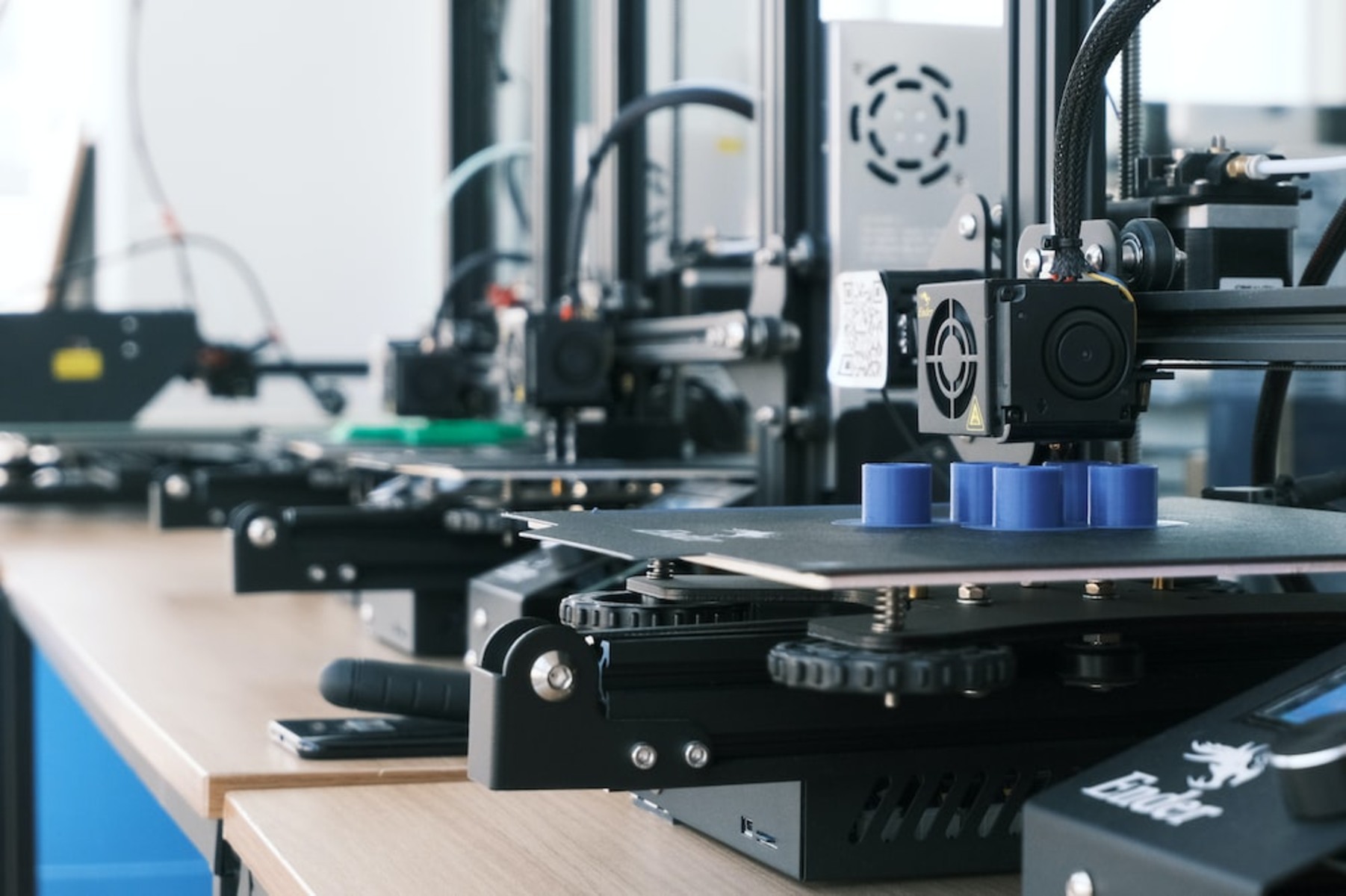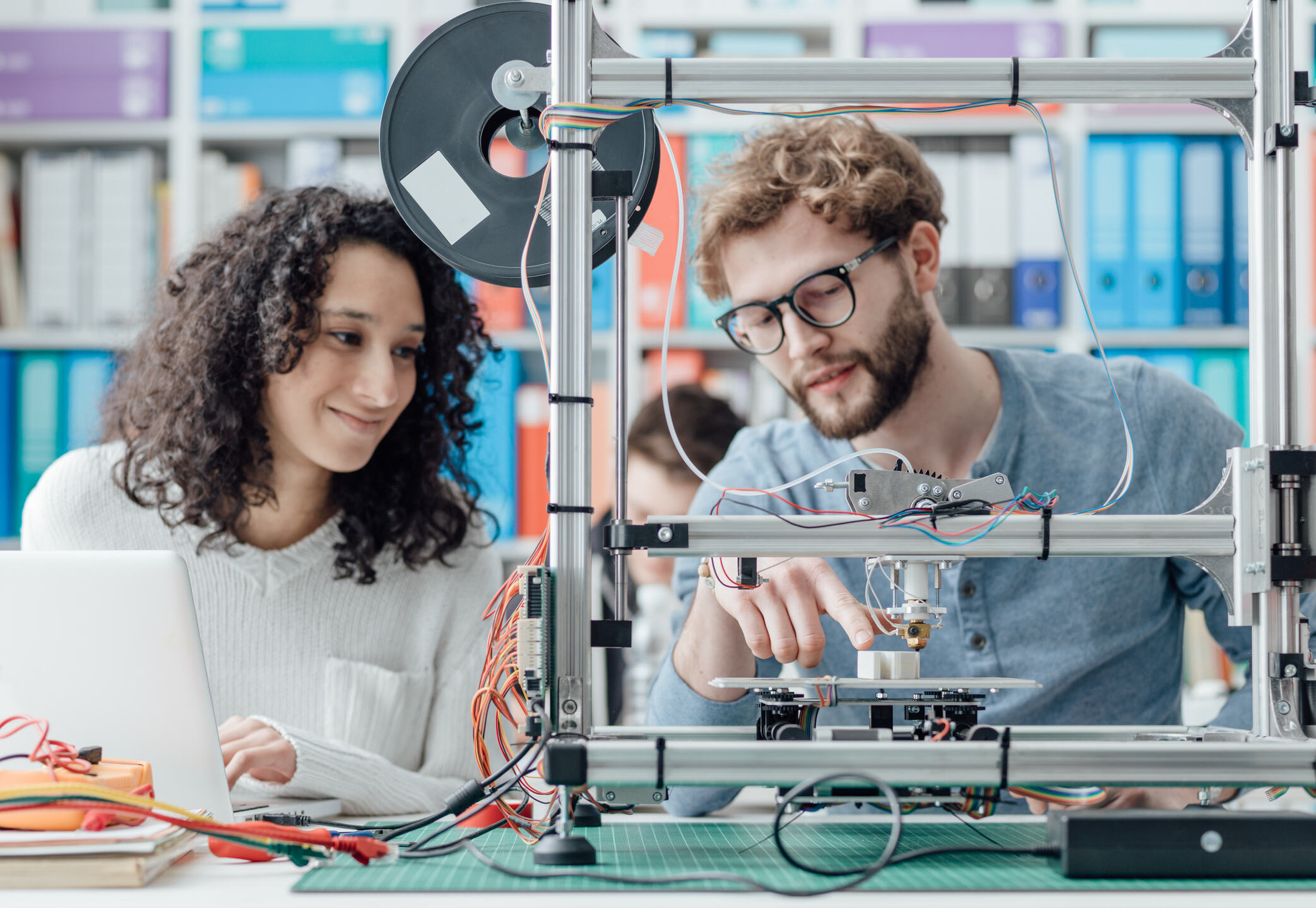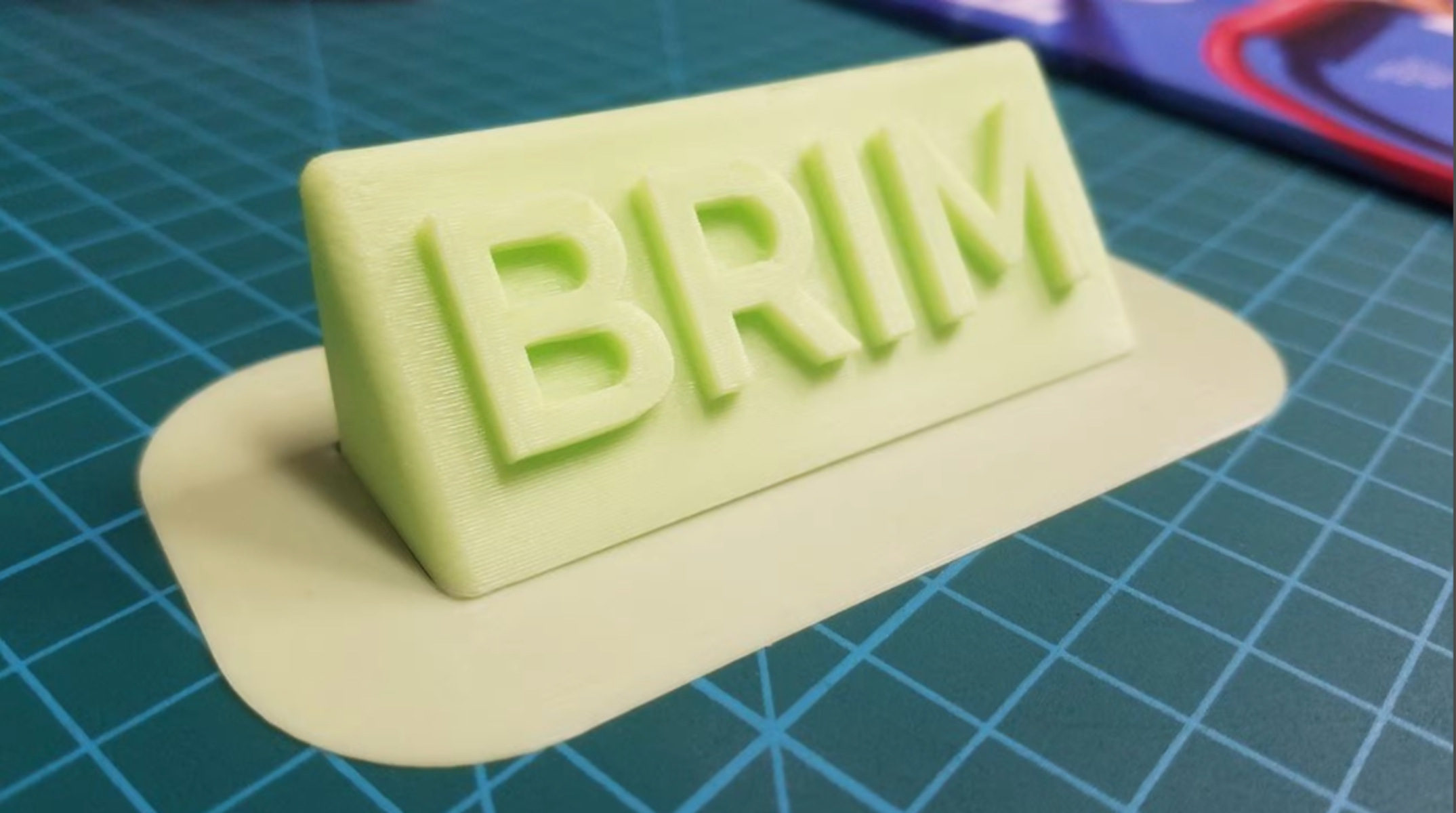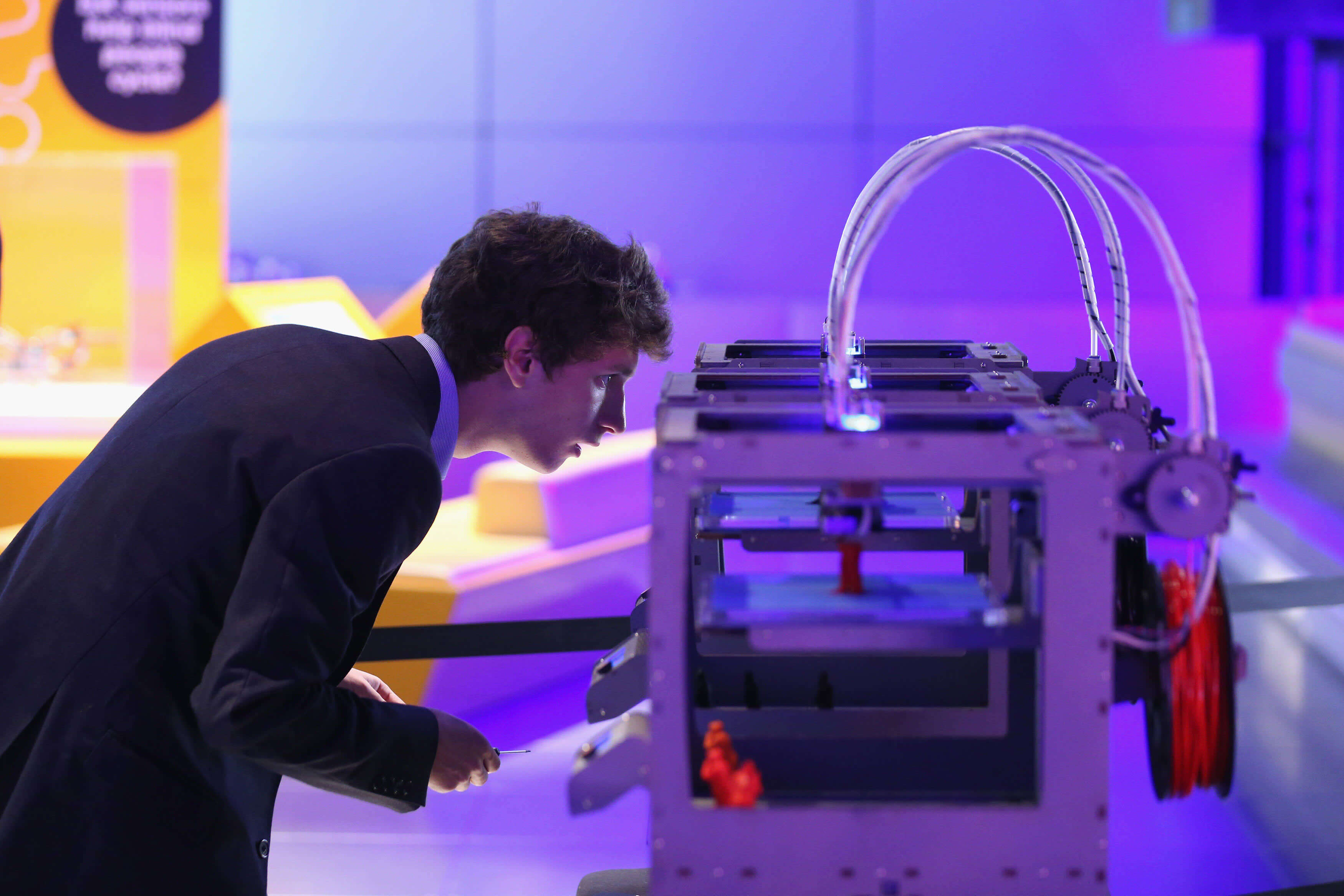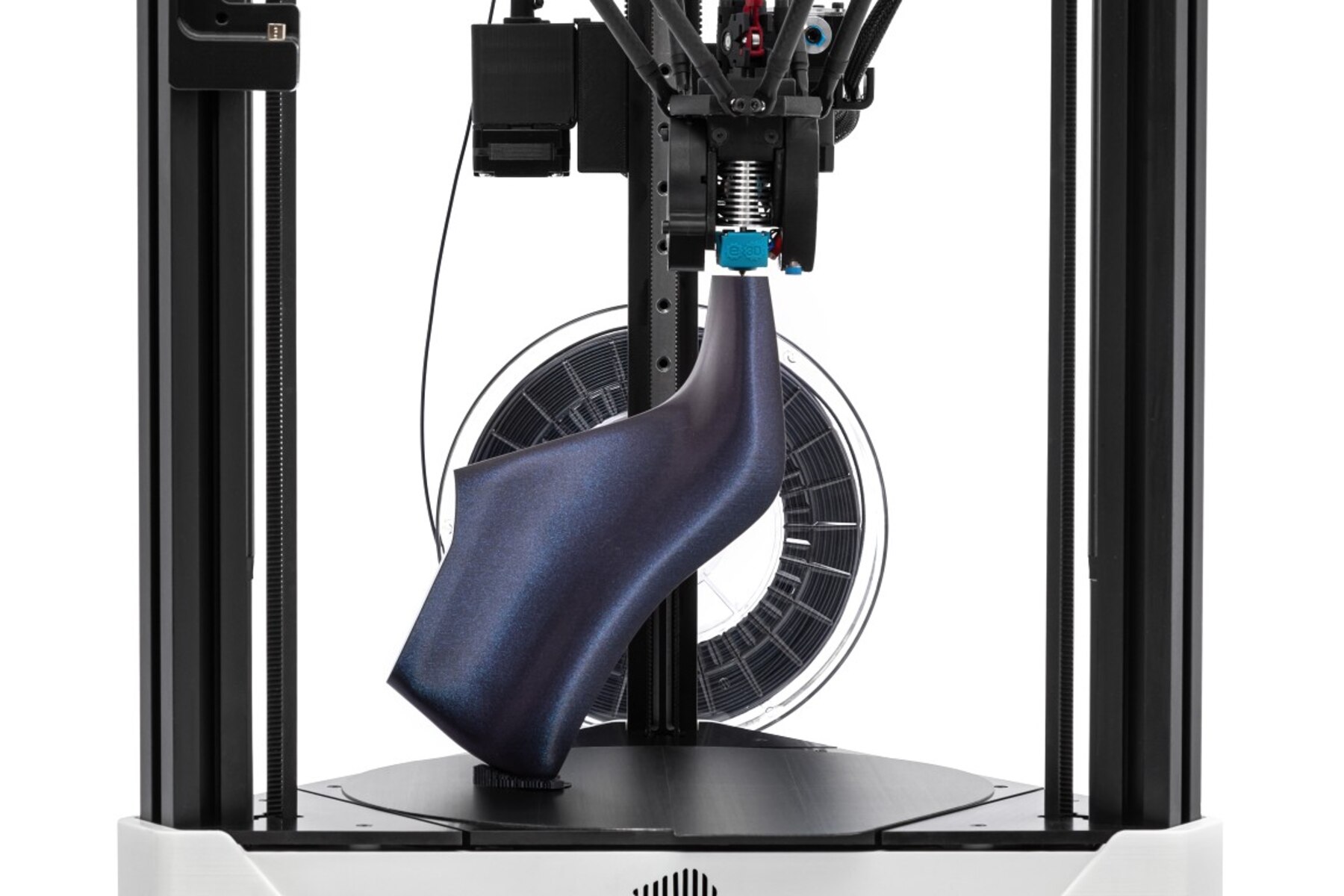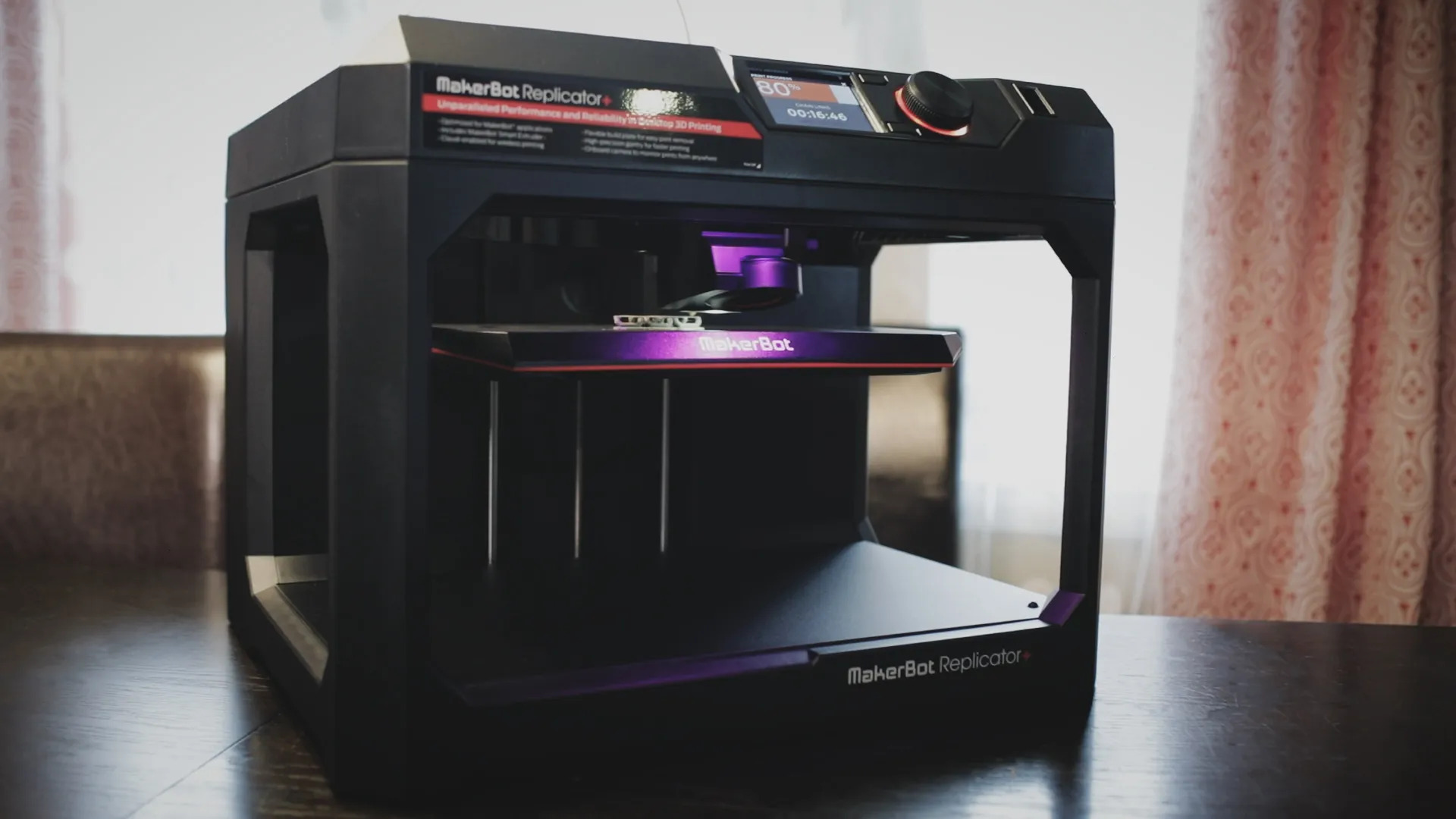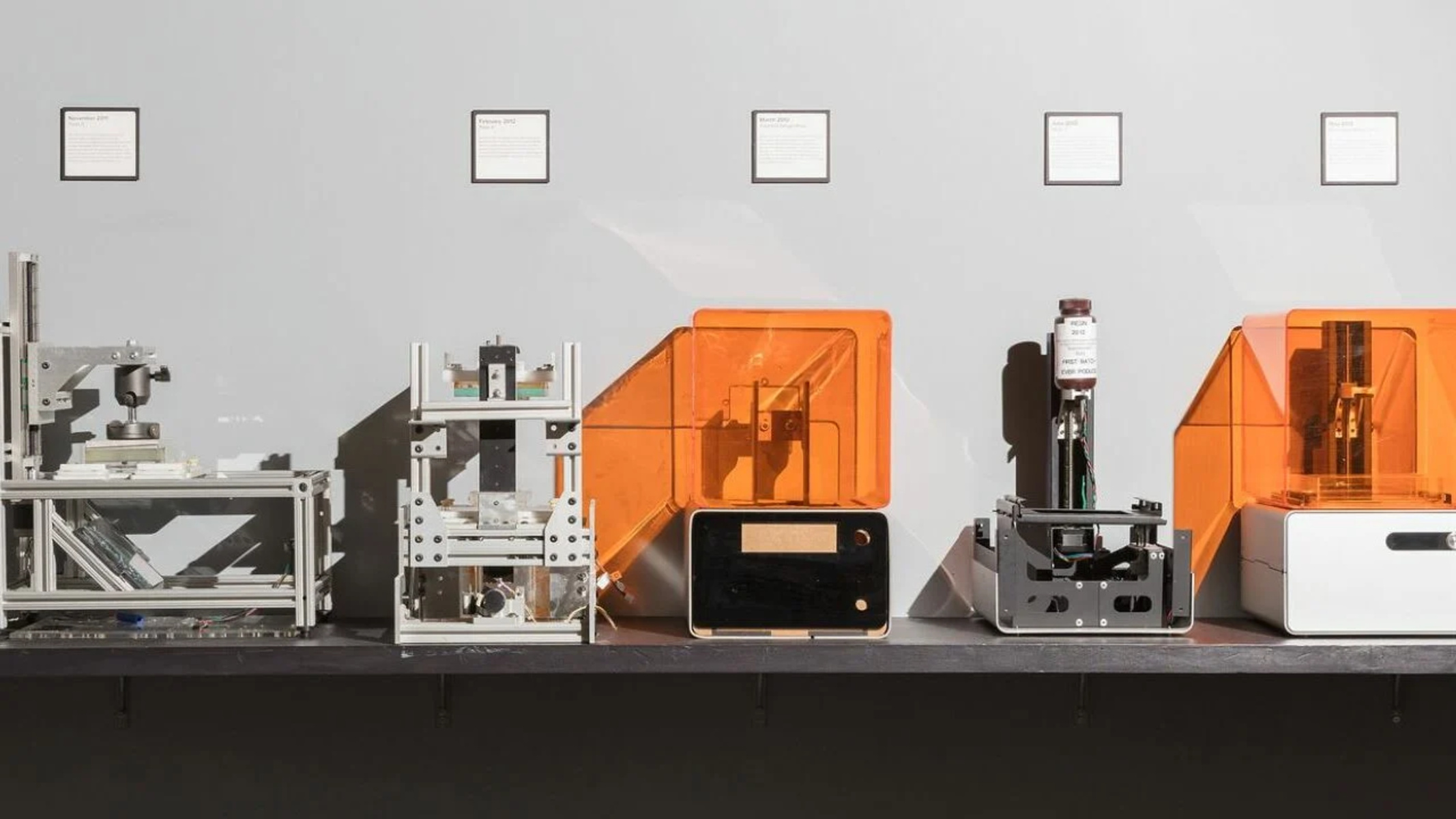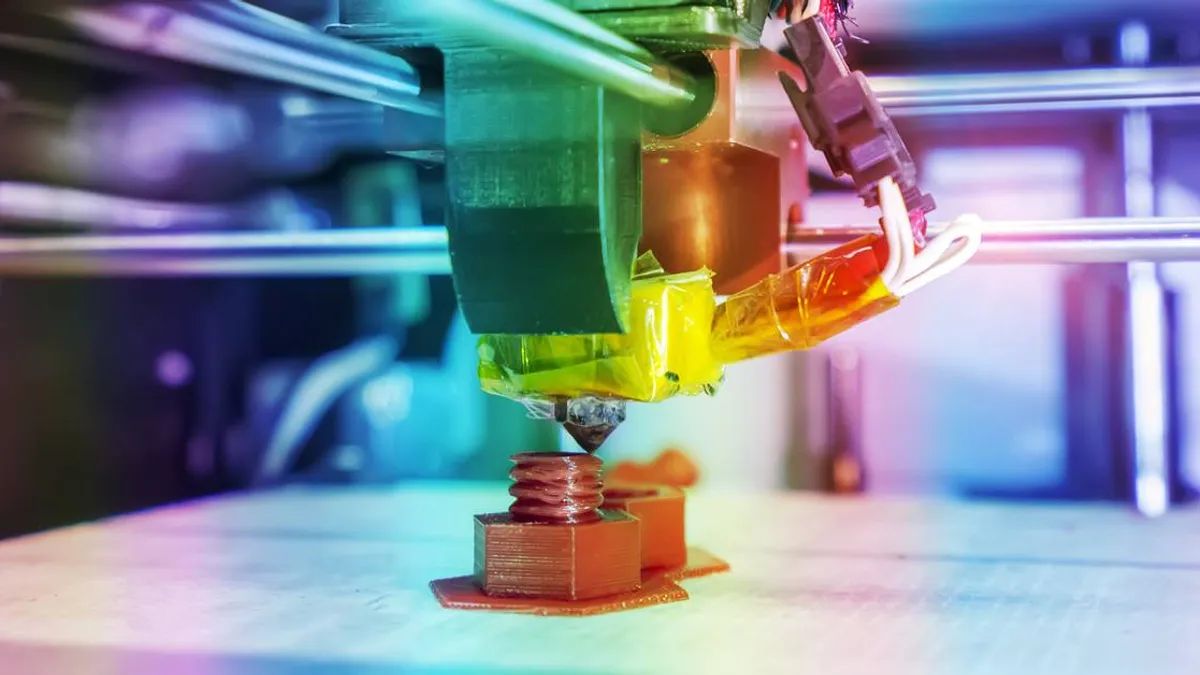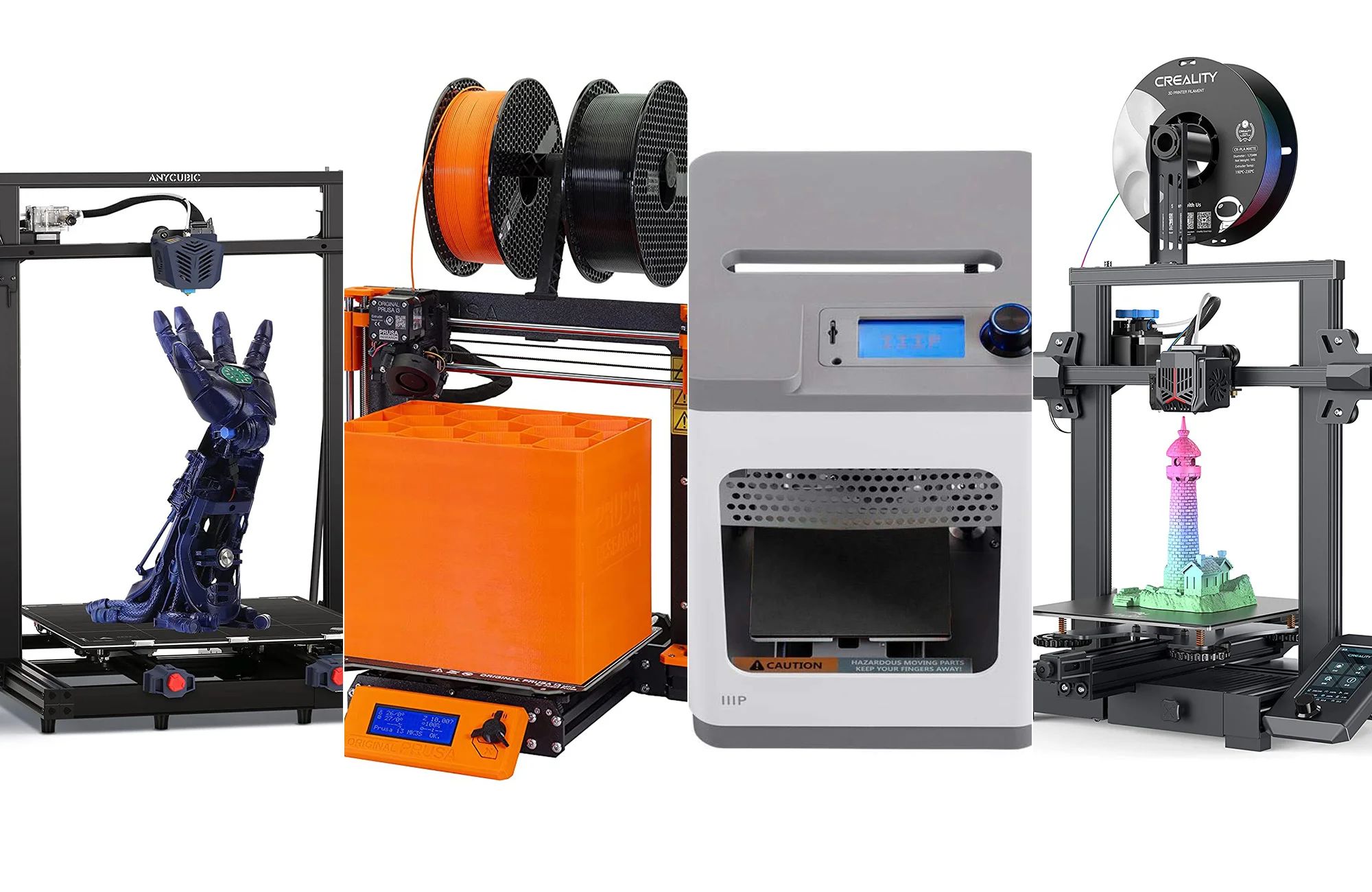Introduction
Welcome to the fascinating world of 3D printing! Over the past decade, this technology has revolutionized various industries, from manufacturing and design to healthcare and food production. But have you ever wondered what materials are used in the process of 3D printing? In this article, we will explore the different types of materials that are commonly used in 3D printing and their unique properties.
3D printing, also known as additive manufacturing, is a process that allows the creation of three-dimensional objects by building layer upon layer of material. These objects can be of virtually any shape or complexity, making the possibilities endless. The choice of material used in 3D printing depends on the specific requirements of the object being printed, whether it’s for functional or aesthetic purposes.
The materials used in 3D printing can be broadly classified into several categories, including filament materials, resin materials, metal materials, ceramic materials, food materials, textile materials, wood-like materials, and composite materials. Each category has its own unique properties, allowing for the creation of a wide range of objects for various applications.
As 3D printing technology continues to advance, so does the range of materials available for use. From traditional plastics and metals to innovative bio-based materials and even food ingredients, the potential for creating new and exciting objects is constantly evolving. In the following sections, we will dive into each category of materials used in 3D printing, exploring their characteristics, applications, and limitations.
So, whether you are a beginner exploring 3D printing for the first time or an industry professional looking to expand your knowledge, join us as we embark on this journey to discover the incredible materials that fuel the world of 3D printing.
Filament Materials
One of the most commonly used materials in 3D printing is filament. Filament materials are spooled plastic fibers that are fed into the 3D printer’s extrusion system. They come in different types, such as ABS (Acrylonitrile Butadiene Styrene), PLA (Polylactic Acid), PETG (Polyethylene Terephthalate Glycol), and more.
ABS filament is a durable and impact-resistant material, making it suitable for functional parts and prototypes. It has good heat resistance and can be post-processed with techniques like sanding and painting. PLA filament, on the other hand, is biodegradable and derived from renewable resources such as corn or sugarcane. It is popular for its ease of use, vibrant colors, and ability to produce detailed prints. PETG filament offers a balance of strength and flexibility, making it ideal for applications that require durability and impact resistance.
Filament materials have various properties that allow for customization of prints. They come in different colors, allowing for visually appealing creations. Some filaments are also available with special properties, such as glow-in-the-dark or conductive filaments.
While filament materials offer versatility and affordability, they do have limitations. The layer adhesion of prints can sometimes be weaker compared to other materials, resulting in lower strength. Additionally, filament-based 3D printing is not suitable for high-temperature applications, as the plastics used in filament materials have lower melting points compared to industrial-grade materials.
Despite its limitations, filament-based 3D printing remains a popular choice due to its accessibility and wide range of compatible printers. It is suitable for hobbyists, educational institutions, and small businesses looking to create functional prototypes, toys, home decor items, and more.
Resin Materials
In addition to filament materials, resin is another commonly used material in 3D printing. Unlike filament-based printing, resin printing utilizes a liquid photopolymer resin that is hardened layer by layer using light sources such as UV or laser.
Resin materials offer highly detailed and accurate prints, making them particularly suitable for applications that require intricate designs or small-scale models. They come in different types, including standard resins, flexible resins, tough resins, and bio-compatible resins.
Standard resins provide a smooth and rigid finish, making them suitable for creating models, figurines, and jewelry. Flexible resins offer a rubber-like flexibility, allowing for the creation of objects that require bendability or shock absorption. Tough resins provide durability and impact resistance, making them a great choice for functional parts and engineering prototypes. Bio-compatible resins are carefully formulated to be compatible with human tissues, enabling the production of medical devices such as implants and dental models.
Resin printing often requires post-processing steps such as rinsing the printed object in alcohol and curing it under UV light. The post-processing helps to remove excess resin and improve the mechanical properties of the print. It is important to note that resin printing requires special equipment, such as a resin printer and a controlled environment due to the use of liquid chemicals.
While resin materials offer high precision and a wide range of applications, they do have some limitations. Resin prints are generally more brittle compared to filament-based prints, and their mechanical properties may not be as strong. Additionally, resin materials can be more expensive compared to filaments, and the process itself can be more time-consuming.
Despite these limitations, resin-based 3D printing is highly valued in industries such as jewelry design, dental and medical applications, and engineering prototyping. The ability to produce intricate and highly detailed prints makes resin printing a preferred choice for those seeking high-quality finishes and precision.
Metal Materials
When it comes to creating strong and durable objects, metal materials are the go-to choice in 3D printing. Metal 3D printing, also known as direct metal laser sintering (DMLS) or selective laser melting (SLM), involves the use of powdered metals that are consolidated layer by layer using a high-powered laser.
Various metals can be used in 3D printing, including stainless steel, titanium, aluminum, nickel alloys, and cobalt-chrome alloys. Each metal has its own unique properties, making them suitable for different applications in industries such as aerospace, automotive, and healthcare.
Metal 3D printing offers exceptional strength, heat resistance, and corrosion resistance, making it ideal for producing functional and structural components. It allows for the creation of complex geometries and intricate designs that may be impossible or cost-prohibitive with traditional manufacturing methods.
However, metal 3D printing comes with its challenges. The process requires specialized equipment and expertise, making it less accessible for smaller businesses or individuals. The high cost of metal powders, the need for post-processing such as heat treatment and surface finishing, and the limited build size are some of the factors that contribute to the higher cost of metal 3D printing.
Despite the challenges, the benefits of metal 3D printing have led to its adoption in industries where high-performance, custom-made metal parts are crucial. From aerospace components to medical implants and tooling, metal 3D printing opens up new possibilities for designs and functionalities that were previously unachievable.
Ceramic Materials
Ceramic materials are gaining prominence in the world of 3D printing due to their unique properties and versatile applications. Ceramic 3D printing involves the use of ceramic powders that are fused together through a process called sintering.
One of the main advantages of ceramic 3D printing is the ability to create complex shapes and structures that are difficult or impossible to achieve with traditional ceramic manufacturing methods. This opens up a wide range of possibilities in various industries such as architecture, healthcare, and electronics.
Ceramic materials offer excellent thermal stability, chemical resistance, and high-temperature capabilities, making them suitable for applications requiring heat resistance or insulation. Additionally, ceramic 3D printing allows for the creation of intricate designs with fine details, providing an aesthetic appeal to objects.
There are different types of ceramic materials used in 3D printing, including alumina, zirconia, porcelain, and hydroxyapatite. Each ceramic material has its own unique properties, such as high strength, bioactivity, or conductivity, allowing for specialized applications.
Like other advanced 3D printing technologies, ceramic 3D printing has its challenges. The process requires specialized equipment and expertise, making it more complex and expensive than traditional ceramic manufacturing methods. Post-processing steps, such as removing support structures and sintering, are also necessary to achieve the final desired properties.
Despite the challenges, ceramic 3D printing is becoming increasingly adopted in industries that require customized ceramic components with complex geometries. From architectural models and custom ceramic art to dental restorations and electronic components, ceramic 3D printing offers innovative solutions for a wide range of applications.
Food Materials
3D printing has expanded beyond traditional materials and has even found its way into the realm of food. Food 3D printing involves the use of edible materials that are printed layer by layer, creating visually appealing and intricate food creations.
One of the main advantages of food 3D printing is the ability to customize and personalize food items. It allows for the creation of intricate designs and shapes that would be challenging to achieve with traditional food preparation methods. From custom-shaped chocolates to intricately designed cake toppers, the possibilities are endless.
The materials used in food 3D printing can vary widely, ranging from edible pastes made from chocolate, sugar, and icing to doughs and batters for items like bread and cookies. These materials are carefully formulated to have the right consistency and texture for printing purposes.
Food 3D printing is not only limited to sweet treats and desserts. It has also found applications in the creation of savory foods, such as pasta and meat substitutes. In fact, some companies are exploring the potential of food 3D printing for creating custom meals that cater to specific dietary needs or preferences.
Although food 3D printing is still a relatively new technology, it presents unique opportunities for creativity and innovation in the culinary world. Chefs and food enthusiasts can experiment with flavors, colors, and textures, pushing the boundaries of what is possible in food presentation and gastronomy.
However, it is important to note that food 3D printing is still in its early stages, and there are certain limitations and challenges to overcome. The printing process can be slow and may require specialized equipment. The taste and texture of printed food items can also differ from traditionally prepared dishes.
Despite these challenges, food 3D printing holds great potential in providing unique culinary experiences. As the technology continues to develop and mature, we can expect to see more innovative uses of food 3D printing in the culinary industry.
Textile Materials
3D printing has expanded its reach beyond rigid materials and has made its way into the realm of textiles. Textile 3D printing, also known as 3D knitting or 3D weaving, involves the creation of flexible and wearable fabrics using additive manufacturing techniques.
Textile materials used in 3D printing are typically composed of flexible filaments or fibers, such as polyester, nylon, or elastomers. These materials are extruded or woven together to form three-dimensional fabrics with unique textures and patterns.
The ability to 3D print textiles opens up a world of possibilities in fashion, sportswear, and even medical applications. Customized clothing and accessories, such as shoes, hats, and bags, can be made with intricate designs and personalization. Additionally, the fabrication of textiles with integrated functionalities, such as elasticity, breathability, or waterproofness, can be achieved through strategic filament placement and specialized printing techniques.
Textile 3D printing offers several advantages compared to traditional textile manufacturing methods. It allows for the creation of complex and seamless structures with minimal waste. The customization possibilities are vast, enabling designers to push the boundaries of traditional fabric construction methods.
While textile 3D printing opens up new opportunities, it also comes with challenges. It requires specialized equipment and expertise to achieve the desired level of detail and functionality. The printing process can be time-consuming, especially for larger and more intricate textile designs. Post-processing steps, such as cutting and sewing, may still be required to assemble the final garments or accessories.
As technology advances and materials continue to improve, the potential for textile 3D printing will expand even further. We can expect to see more collaborations between fashion designers, material engineers, and technology innovators to create innovative and sustainable textile solutions.
Wood-Like Materials
3D printing has evolved to replicate the look and feel of natural materials, including wood. Wood-like materials used in 3D printing create a realistic appearance and texture that closely mimics the characteristics of wood.
Wood-like filaments are typically composed of a mixture of polymer and wood fibers, such as bamboo, birch, or pine. The combination of these materials results in a filament that exhibits a similar grain pattern, color variations, and even a faint woody scent.
Wood-like materials offer a unique aesthetic appeal, making them popular in artistic and decorative applications. From architectural models and intricate sculptures to furniture prototypes and home decor, these filaments provide the opportunity to create objects that have the appearance of wood without the limitations of traditional woodworking techniques.
One of the advantages of using wood-like materials in 3D printing is the ability to create complex shapes and designs that would be challenging or time-consuming to achieve with traditional woodworking methods. The flexibility of 3D printing allows for the creation of intricate details and unique textures that enhance the overall visual appeal of the printed objects.
While wood-like filaments offer the appearance of wood, it is important to note that the mechanical properties are not the same as natural wood. The printed objects may not have the same strength, durability, or weight as real wood. However, post-processing techniques such as sanding and staining can further enhance the wood-like appearance and texture.
Wood-like materials in 3D printing provide a bridge between traditional craftsmanship and modern manufacturing techniques. They offer artists, designers, and hobbyists the ability to create stunning wooden-like objects that are both visually appealing and functional.
Composite Materials
Composite materials in 3D printing combine the properties of different materials, resulting in enhanced performance and functionality. These materials are made by reinforcing a base material, such as plastic or resin, with the addition of fibers, particles, or fillers.
One common type of composite material used in 3D printing is carbon fiber reinforced polymer (CFRP). CFRP combines the lightweight and high-strength properties of carbon fiber with the versatility and ease of use of polymers. This material is known for its exceptional strength-to-weight ratio, making it ideal for applications that require lightweight and strong components, such as aerospace and automotive industries.
Other types of composite materials used in 3D printing include fiberglass-reinforced plastics (FRP), metal matrix composites (MMC), and ceramic matrix composites (CMC). Each composite material is designed to meet specific requirements, such as improved strength, stiffness, thermal conductivity, or resistance to wear and corrosion.
Composite materials in 3D printing offer a wide range of advantages. They can be tailored to meet specific mechanical and functional requirements, allowing for optimized performance in various applications. These materials provide the opportunity to create lightweight and durable parts with complex geometries that would be difficult to achieve with traditional manufacturing methods.
However, composite 3D printing also poses challenges. The printing process can be more complex and may require specialized equipment, such as printers capable of handling the reinforcement fibers. Post-processing steps, such as curing or heat treatment, may be necessary to achieve the desired properties of the composite material.
Despite these challenges, composite materials in 3D printing offer exciting possibilities for industries that require high-performance and customized components. The ability to combine different materials enables designers and engineers to push the boundaries of what is possible in terms of strength, durability, and functionality.
Conclusion
3D printing has revolutionized the world of manufacturing, offering endless possibilities for creating objects with a wide range of materials. From filament-based plastics to metal alloys, ceramics to food ingredients, the choice of materials for 3D printing has expanded exponentially, pushing the boundaries of what can be achieved in various industries.
Filament materials, such as ABS and PLA, provide versatility and affordability, making them popular choices for hobbyists, educators, and small businesses. Resin materials offer high precision and detailed prints, suitable for applications requiring intricate designs and aesthetics. Metal materials provide strength, durability, and heat resistance, catering to industries demanding high-performance components. Ceramic materials offer thermal stability and chemical resistance, enabling the fabrication of complex structures with unique properties.
Textile materials allow for the creation of flexible and wearable fabrics, customized to specific designs and functionalities. Wood-like materials bring the aesthetic appeal of wood to 3D printed objects, while composite materials combine different properties for enhanced performance and functionality.
While 3D printing has unlocked a world of possibilities, it is important to acknowledge the challenges that come with each of these materials. From the limitations of print strength and post-processing requirements to the specialized equipment and expertise needed for certain materials, there are considerations to be made when choosing the appropriate material for a specific application.
As technology evolves, we can expect to see further advancements in 3D printing materials. Innovations will likely focus on improving material properties, expanding material options, and optimizing the printing process for better efficiency and accessibility. These advancements will continue to open new doors for innovation and creativity in various industries.
Whether it’s producing functional prototypes, intricate art pieces, personalized consumer goods, or even 3D printed organs, the wide range of materials used in 3D printing demonstrates the versatility and potential of this technology. As we delve deeper into the world of 3D printing, we can truly witness the transformative power it has to reshape the way we design, create, and experience the objects around us.







